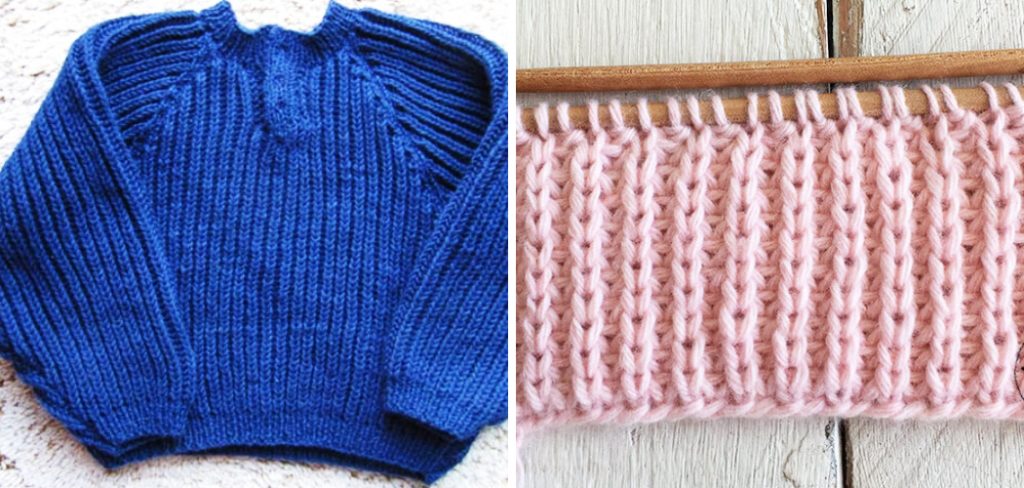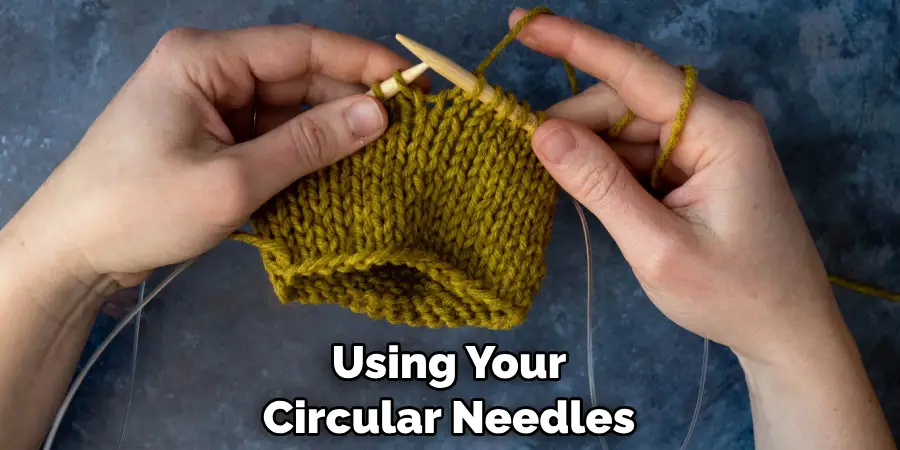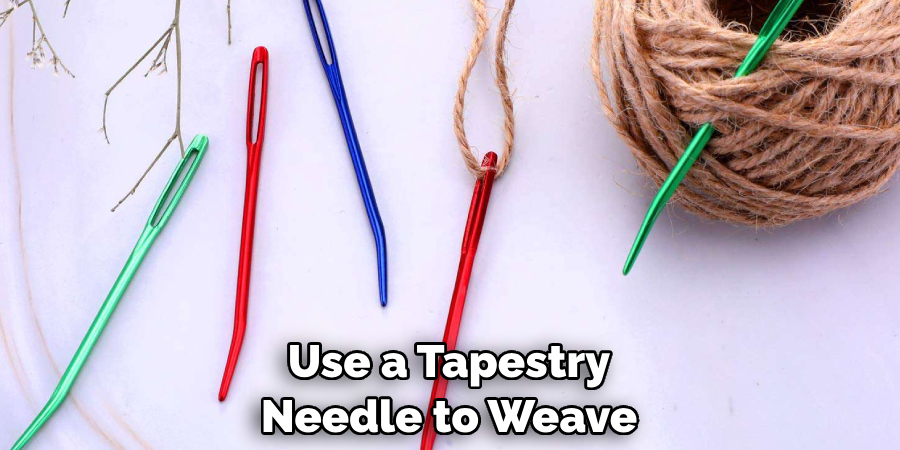Are you a knitting enthusiast looking for the perfect project to test your skills? Shaker stitch is an ideal choice—it’s both straightforward and beautiful enough to show off your creativity. With this pattern, you can make hats, scarves, and even sweaters that will have everyone admiring your handiwork.

In this blog post on how to knit shaker stitch, we’ll discuss how to create this striking knitted texture step-by-step while providing helpful tips along the way. So grab those needles and some yarn — let’s get started!
Needed Tools and Materials
Given below are the materials and tools required to complete your shaker stitch knitting project:
Needles:
You’ll need circular needles in a size that is compatible with the yarn you’re using. The needle size should be two or three sizes smaller than what’s recommended on the yarn label.
Yarn:
Choose any color of worsted weight (4) yarn that you like.
Tapestry Needle:
To help weave in the ends of the knitting.
Scissors:
For snipping off excess yarn.
Step-by-step Guidelines on How to Knit Shaker Stitch
Step 1: Cast on the Desired Number of Stitches
Using your circular needles, cast on the desired number of stitches. Make sure to leave a few extra inches of yarn for weaving in later. It’s best to use the long-tail cast-on method for a better finish. But if you’re more comfortable with the backward loop cast on, go ahead and use it. You can also use a needle one size larger for casting on.

Step 2: Knit a Row of Purls
Once you have your stitches on the needles, begin by knitting a row of purl stitches. Make sure to keep your tension even to avoid any lumps in your work. Otherwise, it will be difficult to count your stitches later.
It’s also important to keep your stitches the same size throughout the entire project. But if you’re a beginner, don’t worry too much about keeping the tension the same — practice makes perfect!
Step 3: Knit a Row of Knits
Now that you have knitted one row of purl stitches, move on to the next step: knitting a row of knit stitches. Again, remember to keep your tension even as you complete this row. You can use the “knit one, purl two” technique to ensure that your stitches are even. It’s also important to be gentle on the yarn as you knit — tugging too hard can cause it to break.
Step 4: Repeat
Repeat steps 2 and 3 until you have knitted the desired number of rows. As you go through this process, you’ll begin to see a pattern emerge in your knitting. It would be helpful to count your stitches regularly to check if they match what is stated in the pattern. However, keep in mind that you don’t have to be too precise when it comes to counting the stitches.
Step 5: Bind off Your Work
When you have completed knitting the desired number of rows, it’s time to bind off your work. To do this, knit two stitches together as if they were one stitch and then pull the first stitch over the second. You can also use a different binding-off technique if you prefer. But the most important thing is to remember to leave a few extra inches of yarn for weaving in later.
Step 6: Weave In Your Ends
Once your knitting is bound off, use a tapestry needle to weave in the ends of the yarn. Make sure that all of the tails are tucked neatly and securely into the back of your work for a neat finish. You should also make sure to be gentle when weaving in the ends so that you don’t break or damage the yarn.

Step 7: Block Your Work For Best Results
Blocking helps to even out any lumps or bumps in your work and ensures that the stitch texture really shows. To block your knitting, you’ll need a blocking board or other flat surface and some pins. Lay out your piece on the board and then pin it into shape using the pins. This will help to set the shape of your work and ensure that you get a neat finish.
Step 8: Soak Your Work in Water
Once your piece has been pinned into shape, it’s time to soak it in water. You can do this by soaking a towel in some lukewarm water and wringing out the excess moisture. Then place your knitting on top of the damp towel and leave for about 30 minutes. It’s important to not leave it too long as the yarn could start to shrink if left for too long.
Step 9: Dry Your Work
After soaking, remove your piece from the damp towel and place it on a clean, dry towel. Blot the excess moisture with another dry towel, and then leave the piece to air-dry overnight. Make sure not to expose your knitting to direct sunlight as this may cause fading or distortion in the color or shape of your project.
Step 10: Enjoy Your Masterpiece!
Once your knitting has completely dried, it’s time to admire your work. The shaker stitch looks beautiful in any color and can be used for a variety of projects. Whether you’re making a scarf, hat, sweater or other knitwear item, this pattern is sure to impress everyone who admires it!
Step 11: Keep on Knitting!
Now that you have mastered how to knit shaker stitch, it’s time to keep honing your knitting skills. Experiment with different yarns and textures, and don’t forget to take the time to relax while you’re at it. Knitting is a great way to unwind and de-stress — so keep on knitting! Always remember that practice makes perfect — so don’t be discouraged by any mistakes you make along the way.

Following these steps will help you create a beautiful and unique piece of knitted work that you can be proud of. So get those needles clicking—you’re on your way to becoming an expert shaker stitch knitter!
If you’re looking for more advice or tips on how to knit shaker stitch, don’t hesitate to contact us – we’d love to help answer any questions or concerns you may have! Happy knitting!
Frequently Asked Questions
Q: What Type of Yarn Should I Use for Shaker Stitch?
A: You can use any worsted weight (4) yarn for shaker stitch. Select a color that you like and make sure to use needles two or three sizes smaller than what’s recommended on the yarn label.
Q: What Kind of Needles Should I Use For Shaker Stitch?
A: If you’re using worsted-weight yarn, you should opt for circular needles in a size that is compatible with the yarn. It’s best to use two or three sizes smaller than what’s recommended on the yarn label.
Q: What is Blocking and How Do I Do it?
A: Blocking helps even out any bumps or lumps in your work and ensures that the stitch texture really shows. To block your knitting, you’ll need a blocking board or other flat surface and some pins. Lay out your piece on the board and then pin it into shape using the pins. Then soak a towel in some lukewarm water and wring out the excess moisture.
Place your knitting on top of the damp towel and leave it for about 30 minutes before blotting with another dry towel. Finally, leave the piece to air-dry overnight. Make sure not to expose your knitting to direct sunlight as this may cause fading or distortion in the color or shape of your project.
Q: What Other Projects Can I Use Shaker Stitch For?
A: The shaker stitch looks beautiful in any color and can be used for a variety of projects. You can make scarves, hats, sweaters or other knitwear items with this pattern. It also looks great as an embellishment on other knitting patterns, such as lace stitch or ribbing. With so many possibilities, the shaker stitch is sure to become one of your favorite stitches!

Conclusion
After learning how to knit a Shaker stitch, you should be proud of the cozy piece of fabric that is now in your hands. Knitting this stitch will have allowed you to sharpen your skills and make something unique and special. Not only does knitting give you a special item that can remind you of the process involved, but it also gives you a great sense of accomplishment!
Additionally, knitting can even be therapeutic for some. So don’t be afraid to challenge yourself with this stitch, to see what you’re capable of!
Who knows- maybe one day others will be amazed by your beautiful pieces! Plus, once you have honed your knitting skills, move on to even more intricate stitches such as cables or lace work. You have something unique to share with the world when it comes to knitting so go ahead and get stitching! Thanks for reading this article on how to knit shaker stitch.


